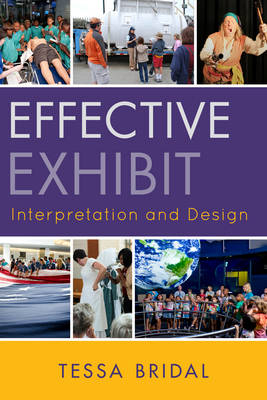
Effective Exhibit Interpretation and Design
Altamira Press (Verlag)
978-0-7591-2111-9 (ISBN)
Effective Exhibit Interpretation and Design examines the impact of an integrated approach to exhibit design and development on the effective creation and support of live interpretation of exhibit messages and institutional mission. Bridal argues that the interpreters who bring these exhibitions, an institution’s mission, collections, and stories to life and the forefront of a visitor’s attention are just as vital a part of an institution’s public face, and that neglecting to give live interpretation an equal seat at the table impoverishes the ultimate visitor experience.
Eight institutions collaborated with the author in examining the outcomes of approaching exhibit and live interpretation design and development collaboratively, the challenges of adding interpretation to spaces and exhibits not designed for it, and the guiding practices they have put into place. These institutions were: Imagine It! The Children's Museum of Atlanta, Minnesota History Center, The Missouri History Museum, the Museum of Science and Industry, Chicago, National Children’s Museum, The National Museum of American History, The Science Museum of Minnesota and The Science Museum of Virginia. Information was also shared by the Children’s Museum of Indianapolis and the Monterey Bay Aquarium.
Tessa Bridal has over 30 years of experience working with museums, and as a consultant nationally and internationally, and received the American Association of Museums’ Education Committee Award for Excellence in Practice, given to individuals who have greatly influenced the work of the museum education field. She is the author of a prize winning novel, a contributor to several anthologies, has served as editor of newsletters and museum publications, and of the non-fiction book Exploring Museum Theatre, also published by Alta Mira Press. She can be contacted at tessa.bridal@icloud.net.
Introduction
List of Illustrations
List of Abbreviations
Acknowledgements
The Museums
Chapter 1
oDesigning an exhibit and a program space simultaneously
oRetrofitting and Adding Interpretation to Existing Exhibits
oNo Program Space
oChallenges and Benefits of collaborative exhibit design/fabrication and interpretation/program development
§Communication
§Organization
§Space
§Dead space
§Location
§Connection to exhibit
§Sound and activity from adjacent exhibits
§Storage
§Technical needs
§Visitor comfort
oAddress the needs of an audience to see, hear, and focus
oDiscuss the various styles of interpretation best suited to the goals of your exhibit
oResults
Chapter 2
oMascots
oExhibit host/greeter
oTours
oGuest presenters
oObject carts
oFacilitated programs
oDemonstrations/presentations
oCharacter appearances
oStorytelling
oCreative dramatics
oLiving history
oMuseum theatre
Chapter 3
oProgram development
oExpectations of programs and those who present them
oWho presents
oWho are our interpreters and what do we call them?
oSelecting presenters
oTraining/coaching
oWhy hire live interpreters when electronic means are available?
oScripts
oIn closing…
Appendix A
Appendix B
Appendix C
Appendix D
Appendix E
Appendix F
Appendix G
Appendix H
Appendix I
Resources
| Verlagsort | California |
|---|---|
| Sprache | englisch |
| Maße | 151 x 228 mm |
| Gewicht | 227 g |
| Themenwelt | Kunst / Musik / Theater |
| Geisteswissenschaften ► Geschichte ► Hilfswissenschaften | |
| Wirtschaft ► Betriebswirtschaft / Management | |
| ISBN-10 | 0-7591-2111-7 / 0759121117 |
| ISBN-13 | 978-0-7591-2111-9 / 9780759121119 |
| Zustand | Neuware |
| Haben Sie eine Frage zum Produkt? |
aus dem Bereich


